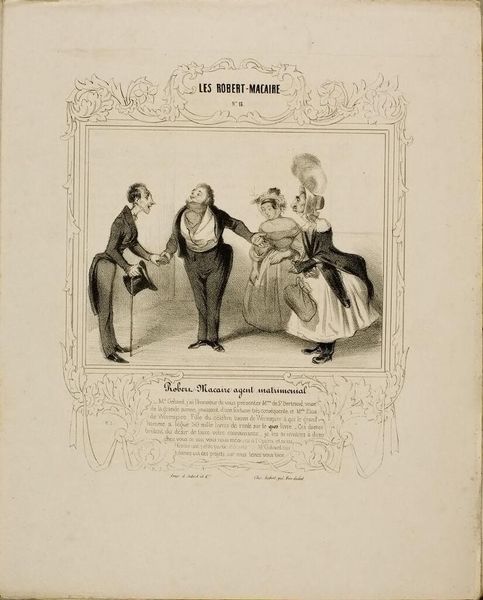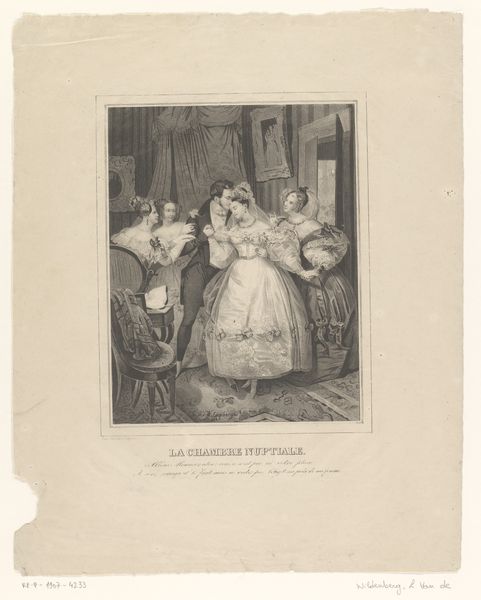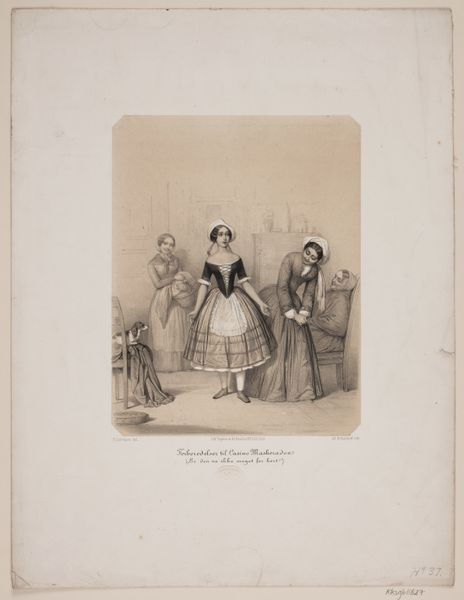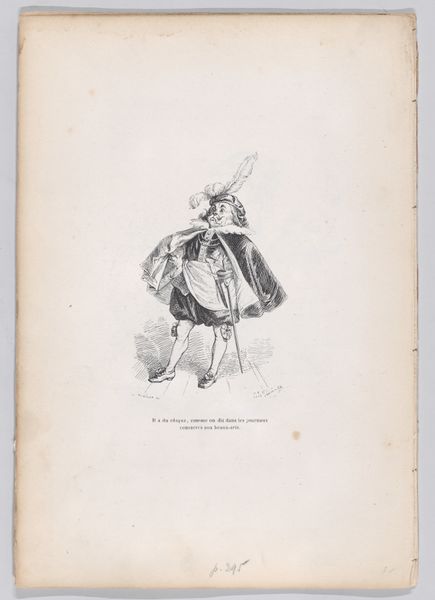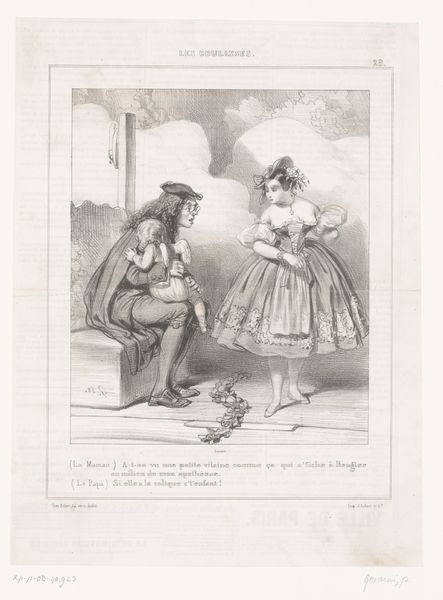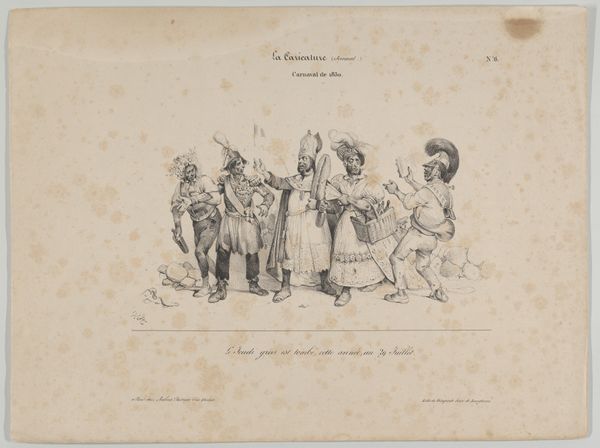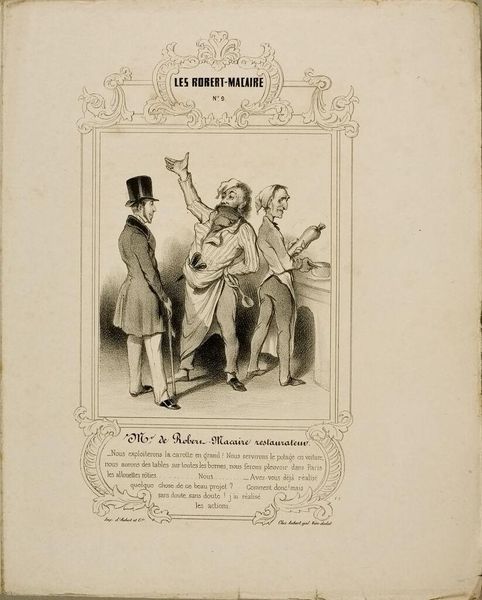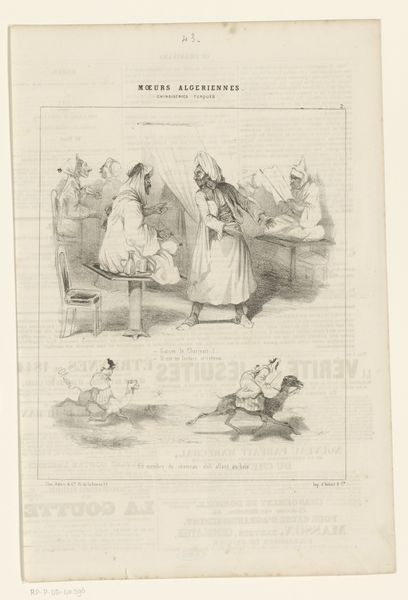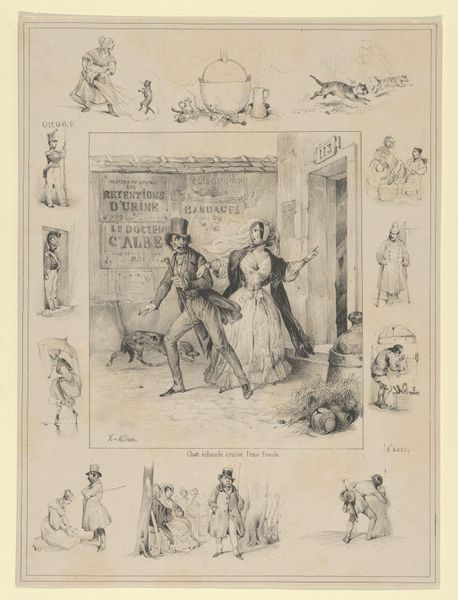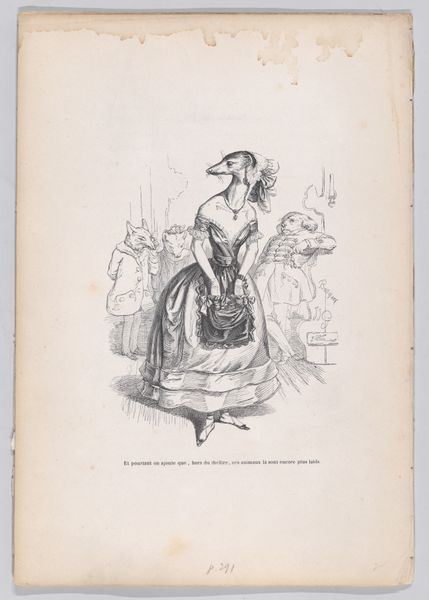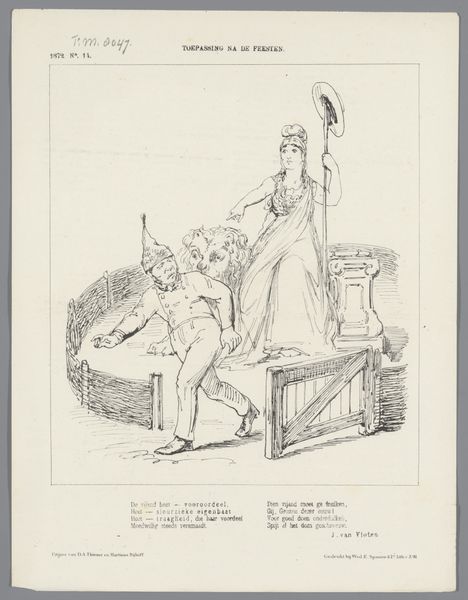
drawing, lithograph, print, paper
#
drawing
#
lithograph
# print
#
paper
#
geometric
#
decorative-art
Dimensions: 345 × 264 mm
Copyright: Public Domain
Editor: So, this is "A Collection of the Most Admired Polkas..." It's an undated print, likely a lithograph on paper. The scene of dancers makes it feel very performative and staged. What’s your read on this piece? Curator: Well, seeing this piece, I immediately consider the context of public entertainment and social dancing in the 19th century. Polka's rise was, in many ways, a democratic one. It moves from central European folk dance to a sensation among the upper classes. What kind of social statements might such depictions of the polka have conveyed? Editor: I hadn’t thought about the democratizing influence. I was focused on the fashion, and the very posed nature of the figures. It all looks very… staged for the viewer. Curator: Exactly. Who was the viewer? Sheet music like this became incredibly popular in homes. Think about the market forces driving its creation. How do these images of idealised social dance relate to the aspirations, or perhaps the fantasies, of the growing middle class? Notice how the composition draws your eye around the circle of dancers. Is there something about the way they interact – or don't – that hints at the social codes of the time? Editor: It’s less about individual expression and more about participation in a collective movement? Almost like advertising. Curator: Precisely. It suggests not just participation, but belonging. This print isn't simply documenting a dance; it's selling a lifestyle and its cultural values through popular imagery. Editor: It's amazing to see how much context is embedded in something as seemingly simple as a piece of sheet music. Now I want to learn the polka! Curator: And I wonder what that act communicates, across time. The afterlives of these works, and their dances, remain intriguing.
Comments
No comments
Be the first to comment and join the conversation on the ultimate creative platform.

